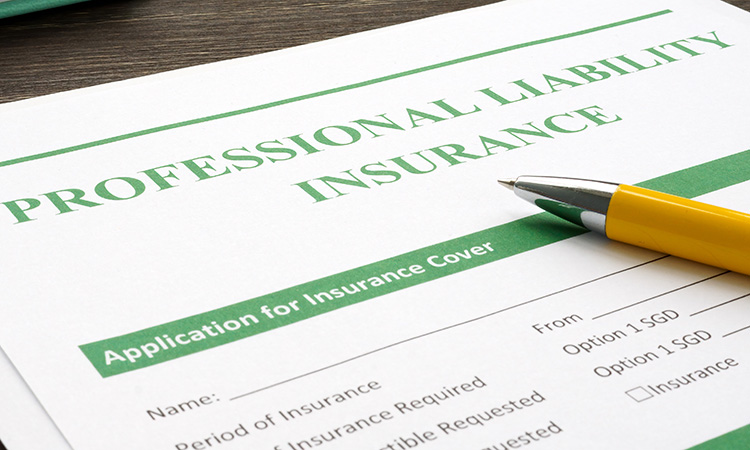Massage therapy is a rewarding and fulfilling career for those who are passionate about helping others. However, as with any health care profession, accidents and lawsuits can happen–so it is important to take the necessary steps to protect yourself and your clients, including obtaining massage liability insurance, whether you are a seasoned massage therapist or just starting your career.
Let’s explore some of the key ways massage therapists can safeguard themselves from lawsuits.
1. Complete proper education and training
The first step to avoiding lawsuits as a massage therapist is to obtain proper education as required by your state. Requirements vary by state, so you must do research to ensure you’re following your state license requirements.
For example, Florida requires massage therapists to complete a 500-hour educational program to apply for a license while Indiana requires 625 hours. As another example, Mississippi, New Hampshire, New York, Pennsylvania, Rhode Island, Oregon and Alaska are all states that require massage therapists to have a CPR certification for licensure. You can find your state to learn more about requirements on MASSAGE Magazine’s state massage laws page but it is also recommended to verify all information by going directly to your state board’s website as this is where you will find the most up-to-date information.
Once you have received the proper initial education, you must also ensure you keep your license updated and skills sharp by completing continuing education courses. Just like applying for a license, continuing education requirements vary by state. Furthermore, continuing education and participating in industry seminars or events also will help massage therapists avoid liabilities by staying on top of new advancements and learnings in the field.
2. Obtain massage liability insurance
Liability insurance is an essential step for protecting massage therapists from malpractice lawsuits. This type of insurance can help massage therapists avoid lawsuits by providing financial protection in the case of a claim.
The most common claims massage therapists face include burns from a hot stone massage, back injuries due to too much pressure, injuries from being stretched incorrectly, and a massage table breaking and causing a client to fall to the floor and sustain injuries. A proper liability insurance policy would protect the massage therapists from these claims and more—but without liability insurance, massage therapists could be responsible for paying for legal fees and damages.
3. Maintain communication and documentation
Massage therapists who communicate clearly with their clients can help avoid lawsuits and provide a better service overall. Clear communication is essential to ensure that the client’s needs are met, that consent is given for treatments, and that any risks associated with massage are properly discussed in advance.
Massage therapists need to use an intake form and SOAP notes that gather information about their clients’ relevant medical history, including any current conditions and past injuries. This information can help the therapist customize their technique to best meet the needs of their client.
It’s also important for massage therapists to clearly explain what types of treatments they offer and how long each session will take. Establishing a clear timeline in advance can help both the therapist and the client get the most out of their treatment.
Additionally, massage therapists should be sure to obtain consent before each session and make sure clients understand any potential risks associated with massage therapy. Informed consent means they understand and agree to the procedure or treatment after being informed of the benefits, risks and alternatives.
This important step allows them to make an educated decision about their course of care. Making sure your patients are informed not only promotes trust but also patient safety.
4. Use appropriate equipment and techniques
Using appropriate equipment and techniques is another critical step to prevent malpractice lawsuits as a massage therapist. For example, massage therapists should use massage tables that are sturdy and stable, oils and lotions that are safe and non-irritating, and techniques they are qualified to perform.
5. Maintain a safe and sanitary environment
Massage therapists should ensure their practice space is clean and safe for clients. This promotes the health and well-being of clients and protects massage therapists from liability claims. Here are some ways to maintain a safe and sanitary environment:
- Regularly clean and disinfect all surfaces: This includes massage tables, chairs, headrests and any other equipment used during a massage. Use EPA-registered disinfectants that are effective against viruses, bacteria and fungi. Always follow the manufacturer’s instructions when using these products to ensure they are being used correctly.
- Use fresh linens for each client: Using fresh linens for each client is essential for maintaining a sanitary environment. Make sure to wash and dry all items thoroughly after each use, and store them in a clean and dry place.
- Wash hands frequently: Massage therapists should wash their hands frequently, especially before and after each massage. Use warm water and soap, and wash for at least 20 seconds. If hand washing is not possible, use an alcohol-based hand sanitizer that contains at least 60{6b2fa08d5993bc7e76ffaca7a3a295e96a3274ffb0576a302ceddffe26335ebd} alcohol.
- Avoid cross-contamination: Cross-contamination occurs when germs are transferred from one surface to another. To avoid cross-contamination, massage therapists should use separate containers for clean and dirty linens, as well as separate towels and washcloths for each client. It is also important to avoid touching your face, hair, or clothing during a massage.
- Maintain proper ventilation: Good ventilation can help reduce the risk of airborne transmission of germs. Make sure your massage therapy setting has adequate ventilation, and consider using air purifiers to help filter the air.

About the Author
Hannah Young is brand manager for Massage Magazine Insurance Plus (MMIP). MMIP provides massage liability insurance for as low as $149 per year with policy options for part-time and full-time professionals. The policy includes $3 million per year in coverage in addition to thousands more in additional coverages like product coverage, stolen equipment coverage, identity theft protection and more.
